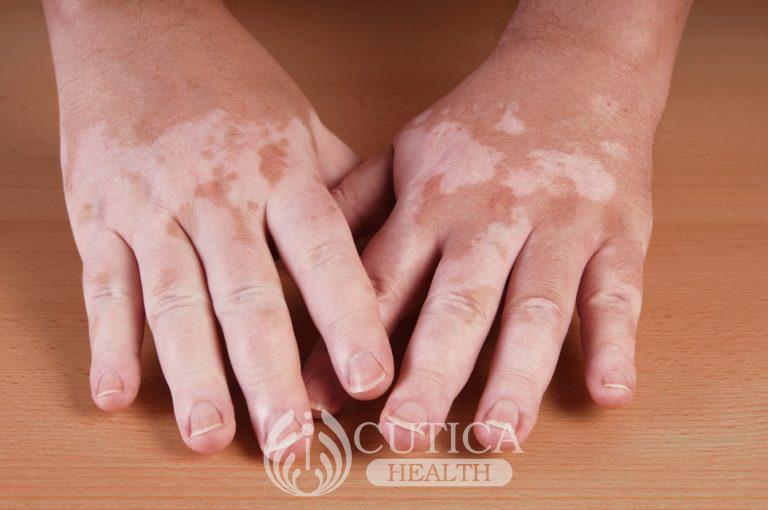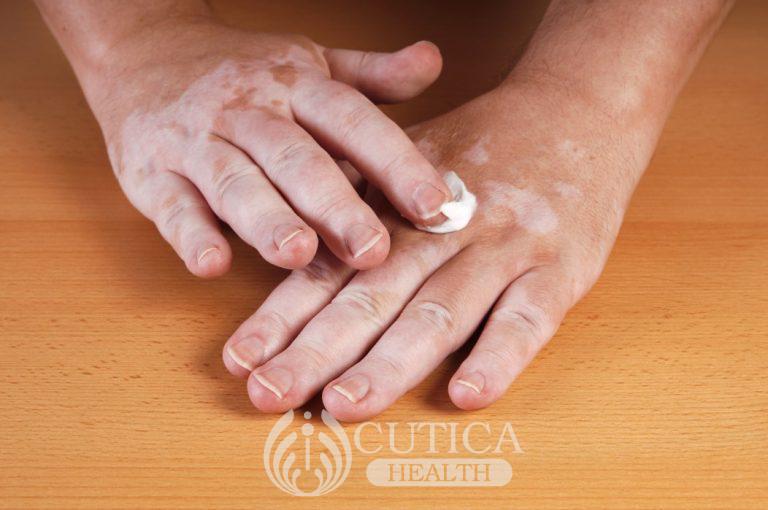
Have you ever seen someone with pale-white patches or spots? It may be Vitiligo.
It is estimated that 1-2% of people suffer from vitiligo globally.
Here is Rhoda’s case: She is a 28-year-old physical fitness trainer who displays her work on Instagram to followers and prospective clients. One afternoon after posting a photo on Instagram, a follower commended her for being bold about vitiligo and loving her skin.
Rhoda is somewhat of a vitiligo ambassador. When it started on her leg years ago, Rhoda thought she simply had a birthmark that she had not noticed before. However, the once small hypo-pigmented patch grew larger. Later, she developed a similar one around her neck. After seeing a dermatologist, she was diagnosed with vitiligo. Rhoda wears the hypopigmented patches on her neck like jewelry. She is not shy or embarrassed by it, an attitude her Instagram follower noticed and admired. Rhoda calls vitiligo her Beauty Marks.
What is Vitiligo?

Vitiligo is a life-long skin condition where pale-white irregular patches appear on the skin. It can be due to a gradual or sudden lack of melanin pigment in the skin. It is often progressive, and spontaneous re-pigmentation is rare. Anyone at any age can develop it. Distinctly, it commonly affects more females than men, while 50% begin in childhood.
Vitiligo on dark skin is often quite striking. The skin condition can have detrimental effects on a person’s self-esteem and confidence, and lead to isolation or depression.
Due to stigma and misdiagnosis, it may be confused with leprosy or intentional altering of the skin with chemicals (i.e., bleaching).

Vitiligo is not contagious.
What are the causes?
The definite cause is unknown, even after years of intensive research.
Various factors, however, may contribute to vitiligo. They include:
- An autoimmune response. An autoimmune response comes about when someone’s immune system sees healthy skin cells – melanocytes – as a threat, thus attacks them. This leads to the death of the melanocytes, creating pale-white spots. Melanocytes are skin cells that produce the skin pigment (melanin) that colors to our skin and protects us from ultraviolet rays from the sun.
- Vitiligo is associated with other medical conditions such as thyroid disease, Type-1 Diabetes, and other autoimmune illnesses.
- A family history of vitiligo or autoimmune diseases is common in persons with vitiligo.
- A significant injury to the skin like a cut, extreme sunburn, or chemical burn may precede vitiligo
Symptoms and signs
Loss of skin color that results in pale irregular lesions is the only symptom.
The areas affected plus the extent of skin affected varies from person to person. Some will have a few white dots that extend no further for years, while others have large widespread patches affecting an extensive area of skin. It may begin as a small spot, paler than the rest of the skin, then progressively becomes white.
It can affect the face, neck, chest, back, hands, and feet, among others. Vitiligo also can affect the hair, eyes, and inside the mouth. It is difficult to predict whether the hypo-pigmentation will spread or how fast.
Photosensitivity – from the sun rays – is experienced in the areas of skin affected.

Commonly vitiligo is not associated with skin irritation, soreness, itchiness, or dryness. However, photosensitivity of the affect areas can cause such symptoms.
Treatment
Vitiligo is sometimes more than a minor cosmetic problem, but an issue that needs medical intervention. Since there is no exact cure to revert the hypo-pigmented skin, palliative treatments are used to reduce the visibility or spread of the hypo-pigmented patches. Regular use of sunscreen can help avoid photosensitivity. Additional treatment options that a dermatologist may recommend include special light therapy or topical ointments. Above all, persons with vitiligo should remember Rhoda, who thinks of her vitiligo as Beauty Marks.












